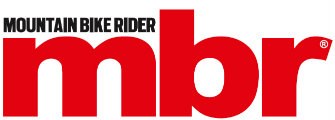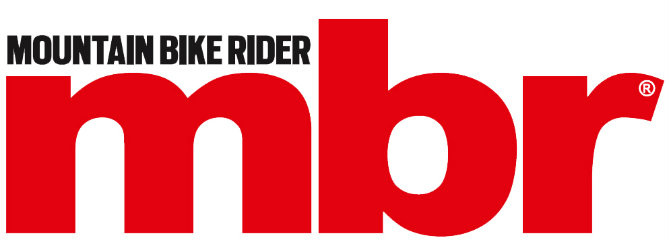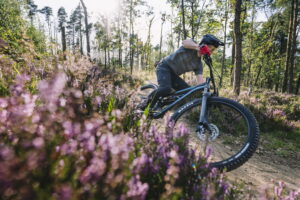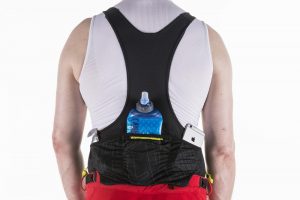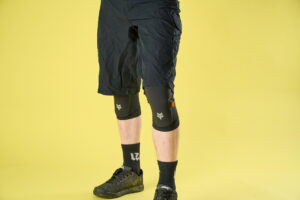Made from old fashioned steel, the Ra Bikes Bergsra is brimming with modern bike tech including a floating brake calliper, tuneable leverage ratios, and geometry adjustments to rival a Specialized
The Ra Bikes Bergsra is like steam punk on wheels: hand welded in Yorkshire from T45 steel, this enduro bike is packed with modern tech
Ra Bikes has been making frames by hand for over a decade in the rolling Howardian Hills of North Yorkshire, but while it’s rooted in James Herriot Country and uses steel as a tubing material, you can forget any cloth-capped ideas of old fashioned cottage industry production.
Ra is progressive and even radical in some cases, the manufacturing happens pretty much entirely in-house at an ever more sophisticated workshop and – unlike most steel makers – it doesn’t stop at rigid frames or baulk at sophisticated suspension designs. There are two new sophisticated full suspension MTBs with multiple adjustability that have been called ‘the most developed steel frames out there’ by legendary US frame designer Neko Mullally of Frameworks racing.

The Bergsra is one of the best looking bikes we’ve seen in 2025, it draws riders over to gawp like a supercar
– Short of time? Click here to skip to the verdict –
RA Bikes Bergsra need to know
- Hand-built in Yorkshire from T45 steel, the Bergsra name comes from Norse folklore
- Frame uses 165mm travel, like some of the best enduro mountain bikes in 2025
- Options to run 29in or 27.5in rear wheels, and multiple geometry adjustments
- Adjustable leverage ratio independent of the geometry adjust features
- Floating coaxial brake mount, separating braking from the suspension action
The Bergsra is the final evolution of owner and designer Rafi Richardson’s longest travel bike. The gusseted frame can be set up with mullet or 29in wheels and is rated for single or triple clamp forks between 170mm and 200mm. The chassis also has adjustable leverage ratio suspension, and chainstay length tuneability. Low-slung with aluminium component parts, the frame has 165mm rear travel.
And at long last, after four years of development, six prototypes, and thousands of hours testing in the Alps and at Whistler Bike Park, the perfectionist tweaker Rafi is calling it finished. The Bergsra is race proven too – piloted to within a whisker of winning Ard Rock 2024 outright by supported Ra rider Josh Brazier, and placing third overall ahead of some serious EDR racers at the big enduro event.

The Bergsra name comes from folklore, but the bike itself is very much Yorkshire born and bred
Before I dive deeper into the review, to be clear from the off, I’ll admit to being friends with Rafi for years (that’s him riding in the photos). I’ve seen him develop his bikes from slightly rough and ready home-spun ideas and experiments to fully refined machines with beautiful looks and finishes.
I’ve seen Ra come a very long way since a creative teenager welded together a wild steel full suspension bike at home and raced it (setting the fastest pace at the speed trap in the process) at a Fort William DH National race. That was over 15 years ago, but that single pivot, Dorado-forked machine proved some of Rafi’s theories and set him on a journey to build his interpretation of what the ultimate steel full suspension bike should be.
Along the way, Rafi’s also ridden and modelled for dozens of test bikes with me, chewed too much bike fat and used this experience as a touchstone to refine the exact feel and ride quality he’s after. Entirely self-taught, I’ve watched him dive much deeper into bike design than I likely ever will, trial outlier geometry ideas and reel them back in, master complicated suspension concepts and kinematics and learn how to programme various engineering machines.
Ra prototypes have come and gone, with everything from custom geometry, chassis flex adjustments, modular chainstays, tuneable leverage ratios, floating brake mounts, and tubing size variations chewed up and spat out. It’s not just welding either, he’s added in CNC’d parts and 3D printing, as well as shaping and welding tubes in house.

The four-position flip chip at the lower shock mount means you can tune the bike’s suspension progression, independently of the geometry too
Design and specifications
Rather than mainly fulfilling fully custom orders, Ra is now selling finalised models with set sizes. Each frame model has also been renamed (Bergsra takes its name from Norse folklore apparently, don’t ask me!) to signify this ‘proper’ launch.
This longer travel enduro or bike park frame has a whole raft of customisation and tune-abilty built in and so much attention to detail that it takes some unpacking. Four sizes stretch from S to XL with a reach of 445mm to 505mm, a head angle of 63.5° and an effective seat angle of 79°. Its stack height rises considerably too as the frames get longer, so taller riders don’t automatically need massive high bars, up from 628mm in S to 655mm in the XL. Bergsra chainstays range from 435mm and can be swapped out to span up to 455mm via three modular (UDH/Transmisson-compatible) dropouts that are included when you buy the bike.

Use the geo adjust flip chip to swap between 29in and 27.5in wheels, and you can further tweak the BB height by dropping or raising the wheels in the frame
The frame uses subtly ovalized tubes and tapered joints and is TIG welded from T45 in the front triangle and heat-treated Reynolds chromoly in the back end. Rafi told me he then uses S515 for flat components like gussets and structural plates and the head tube is turned from a shock-resistant grade steel for a tough/accurate interface with the headset. The headtube itself uses a straight ZS56 size (with a bigger hole), so you can potentially run angle or reach adjust headsets, and is rated and tested to run with dual-crowns with that big boxed-in, gridded, gusset behind.

Internal cable routing for the drivetrain is complemented by external brake hose routing
The pivot shells and exposed hardware are machined from stainless for corrosion resistance and durability, and the clean cable routing is run internal via nylon guide tubes bonded into stainless ports (except the rear brake, which is routed externally throughout and set on either side of the headtube). A threaded BSA BB uses replaceable ISCG mounts on a splined interface and there’s also a downtube bottle cage and top tube tool stash mount.
The Bergsra suspension design is a linkage-driven single pivot with the rocker link wrapped inside the asymmetric rear triangle (now with an added seat stay bridge to tighten the back end up over previous generations). The frame uses an oversized main pivot with huge, 41mm, sealed stainless angular contact bearings and a collet style pre-load design to eliminate play. The wraparound linkage delivers a progressive leverage curve and multiple options to fiddle with the exact ride feel, plus you can fettle the leverage rate by 10% via a 4-position flip chip at the lower shock eyelet.

Build in more progression with this flip chip, letting you add compression for bike park play or mellow it out for more natural trails
Like the new Santa Cruz Bullit, this adjustment is independent of geometry. That means the ride characteristic can be tuned to handle heavy bike park G-outs and landings, or more natural singletrack and enduro-style steeper/slower terrain. Bergsra is rated for air or coil shocks, but most people will likely opt for the coil route, which means a custom-tuned RockShox Vivid with two springs included as standard, based on customer weight.
There’s also a flip chip at the top of the seat stays to swap between 29in or 27.5in wheels, with a further ‘middle’ option in the included kit box of spares, so you can run either wheel size slightly lower or higher to further tune bottom bracket height and ride feel. The mid position can also adjust the BB height up or down by 5mm and the head angle by one degree in each wheel size. The shock linkage itself is machined aluminium in a kind of triangulated boomerang shape with an extra link tucked in behind the Trunnion-mounted 205 x 65mm stroke shock.

The coaxial brake mount ‘floats’, meaning it moves more independently of the suspension
One of the most unique Bergsra features is the rear machined coaxial (200mm rotor minimum) brake mount. This sits inside the rear stays and aligns directly with the hub axle, ensuring the rotor is perfectly in-line with the caliper without the need for any brake boss facing or adjustment. The aluminium brake mount set up also integrates with the included extra ‘wraparound’ floating brake mount, which can rotate at the rear axle when driven/pushed by a carbon arm mounted to the main frame at the forward end.
For those not familiar with how a floating calliper works, the short answer is that this design prevents the brakes interfering with the suspension’s movements. Ra can tune the braking characteristics and define how much the calliper can rotate with the rotor while the suspension is compressing. The design is clean and elegant and also offers two fixed positions where the carbon limb mounts to the front triangle, delivering either 60% or 40% anti-rise. Without the floating mount, anti-rise moves from around 120% to 90% with the fixed position calliper.

A rubbing brake won’t trouble you on the Bergsra, the floating calliper means the pads are always perfectly aligned with the rotor
The mixed material steel frame comes with a lifetime warranty in a myriad of custom powder coated colours. Ra goes above and beyond (too far beyond I told Rafi) because each frame also comes with a professional plastic Peli-style hard case complete with custom-cut foam inserts and a load of spare parts included in the price.
This Ra box looks more like something a pro DH mechanic might make for himself for the World Cup circuit. Inside are the full set of modular dropouts, the floating brake kit, spare small parts, premium Wera Allen keys, a complete set of linkage bearings, and the tools to press everything in and out. There’s also space for a second spring with a different spring rate, included as part of the tailored suspension package created for each rider. Ra calls this an industry-first level of support and attention to detail, and it’s hard to argue with that really.
Components
With customisation on the table for customers to spec the bike as they wish, I won’t delve too deep into the specs here, but this Bergsra build is a SRAM/RockShox blend based around a ZEB fork and Vivid coil shock. It makes sense that brakes at this 165mm travel level are Mavens, with a 200mm front and rear rotor set up that has tons of power without being ridiculously grabby. Controls are a Burgtec bar and stem and a OneUp dropper post and remote.
It’s a customer choice to go with SRAM wireless AXS Transmission or the new mechanical version I rode here. Unlike plenty of new carbon frames without holes, mechanical is still an option with Ra, and I found the new Eagle 90 kit seriously smooth and impressive. Like all Transmission set-ups, the rear mech does lie pretty close to the danger of striking the floor in the MX wheel set up, but the new super-stubby 160mm cranks on the Eagle 90 don’t and offer tons of extra ground clearance.
This test bike came with a Hope Pro 5 hubs/DT Swiss wheel package, all aluminium controls and Continental DH casing tyres, which is obviously a seriously durable set-up, but does mean the bike clocked in well into the 18kg mark.

The Bergsra clocks in at a hefty 18kg, but it’s not heavy or boring in feels when you’re riding
Performance
Rafi told me his key aim with the Bergsra was to dial the suspension performance, but also to make the frame stiff in the right places, without it feeling too solid and harsh on the trails. Over the years, through trial-and-error testing using removeable frame braces and different tubing profiles, the longer travel Ra bike has generally become more solid and stiff because it rode better like that. And with lots of toughness built into the frame, the fact it’s welded in steel and includes multiple adjustable features, the Bergsra inevitably weighs a chunk more than some regular carbon enduro bikes.
Climbing
The frame itself clocks just under 5kg (without shock) in size large, which is roughly 1-1.5kg heavier than a typical carbon enduro frame. You can notice the extra heft pedalling it uphill and around undulating liaison trails, but arguably less so than the effect of Super Soft DH tyres and heavy rims. That means there’s scope to speed up climbing pace if you want to tilt the bike more that way with a few parts changes, whereas this was a purer DH/durable enduro race setup.
Despite feeling a bit chunky, the actual pedalling action and smoothness in the stroke while cranking gentle turns or mashing full gas is impressive. There’s minimal bob at the shock stood up or sat down, and you get where you’re going pretty efficiently and comfortably with the very centred seated climbing position. In fact, I found switching back to my regular Tallboy after the Ra, I had to inch the saddle forward a bit on the rails to get as good and as balanced a seated position as here.

The Bergsra is particularly calm under braking, the suspension stays active thanks to the floating brake design
Descending
The flipside of being a bit heavier than many carbon enduro rigs is few bikes feel this calm and planted on rougher trails. The Ra really trucks on over repeated holes and chop with a very smooth and muted ride quality. I found it exceptionally calm, especially under braking with the floating brake mount set-up, and the way the bike moves up and down at both ends feels very predictable and never pitches your weight about too much.
It’s a bike I can ride really hard on and never feel flustered, and a massive compliment to say it actually reminds me of the Yeti SB165 that I rode a lot last summer and absolutely loved. Like that bike, it has loads of float and isolation over the chunky hits, but still manages to be very manoeuvrable and easy to lean into and tilt over.

Getting sendy on the Bergsra
The top tube on the frame is very low slung and out of the way of my knees and legs. Despite the overall sense of stability, this feeling of the bike being pretty low comes over (especially in the MX setting with the shorter chainstays) as being pretty easy to steer quickly from side to side on tighter trails. The Bergsra never feels cumbersome and it’s easy to initiate fast turns and steeper lean angles to tip in and out of linked turns.
Like me, Rafi prefers the shorter stays and mullet wheel set for the extra reactiveness, but some customers in different locations will love the ultra-stable feel of the longer chainstays and the extra weight it places on the front tyre’s contact patch.

I found the Bergsra was everything a steel frame should be – compliant and fun to ride – just without the twangy feeling some steelers exhibit
The Ra chassis feels stiff and precise and also has a bit of life and energy to twist and drive off terrain fetures. It’s like there’s a bit of give and bump absorption without ever feeling twangy. It’s much like a ‘regular’ posh enduro bike in this regard and I can’t really say I’d swear it was made out of steel if you blindfolded me, as it’s definitely not particularly ‘springy’.
I ended up going down a spring rate compared to Rafi’s stock recommendation, but we concluded that the spring was a firmer rate than advertised in that particular spring. Rafi has longer limbs and likely exerts more leverage hanging off the bike and needs a slightly firmer spring. I’m also clearly not riding it hard or fast enough either, as Ra rider Josh Brazier raced with a 50lb firmer spring at Ard Rock, despite being almost 10kg lighter.

With long chainstays and a low BB, the Bergsra is super stable at speed
Rafi told me that the longer chainstays make the bike even more stable at high speeds and also effect the suspension feel by increasing the leverage on the shock for a slightly more pitter-patter feel off the top. I found it very smooth with the impressive Vivid coil already, and I’m sure if you owned this bike and wanted a proper deep dive, there are multiple ways you could set up the suspension to taste. This aspect is one of the unique features with the Bergsra, just how much tweaking you can do.
Switching between the two leverage ratios on the flip chip gives a distinctly different ride feel. The basic set up is already pretty progressive with loads to punch into deeper into the travel and the more progressive setting maintains the same shape to the leverage curve but resists bottom outs even more and delivers a slightly more supple feel of thinner damping off the top of the stroke.
I’ve ridden with Rafi and other Ra bike owners a lot and can vouch for his claims that, on the latest bikes, not a single bolt has come loose on multiple bikes in the Alps and Canada.
Another observation during my limited time riding the Ra is you better be ready for lots of attention as, a bit like with the Atherton AM 170 M1 I reviewed, the Bergsra draws people in. Riders approach you all the time to check it out, admire the bike and start asking questions and Rafi says that he’s made so many friends and ridden with so many strangers because of this. This aspect of being different will definitely appeal to some riders and this Bergsra might be made out of steel, but definitely isn’t some kind of traditional cookie-cutter machine either in terms of looks or features.

How much do you want to be hooking this berm right now?!
Verdict
Ra Bikes is offering a seriously refined and unique product with this Bergsra and I’m not being impartial in saying the brand has done a fantastic job with it. Judging from the number of trailside comments I got, people love the look of the steel rig and the amount of practical and meaningful adjustability that’s so neatly packaged into this machine is impressive. A four grand steel enduro frame that isn’t the lightest obviously won’t be for everyone, but this machine deserves attention not just for being unusual, but for being so well tuned. Both the suspension and chassis are on point, and it’s a cinch to adapt it to deliver a rock solid, predictable and composed base to really charge serious DH trails or bike parks on without ending up in your own war with the Gods.
